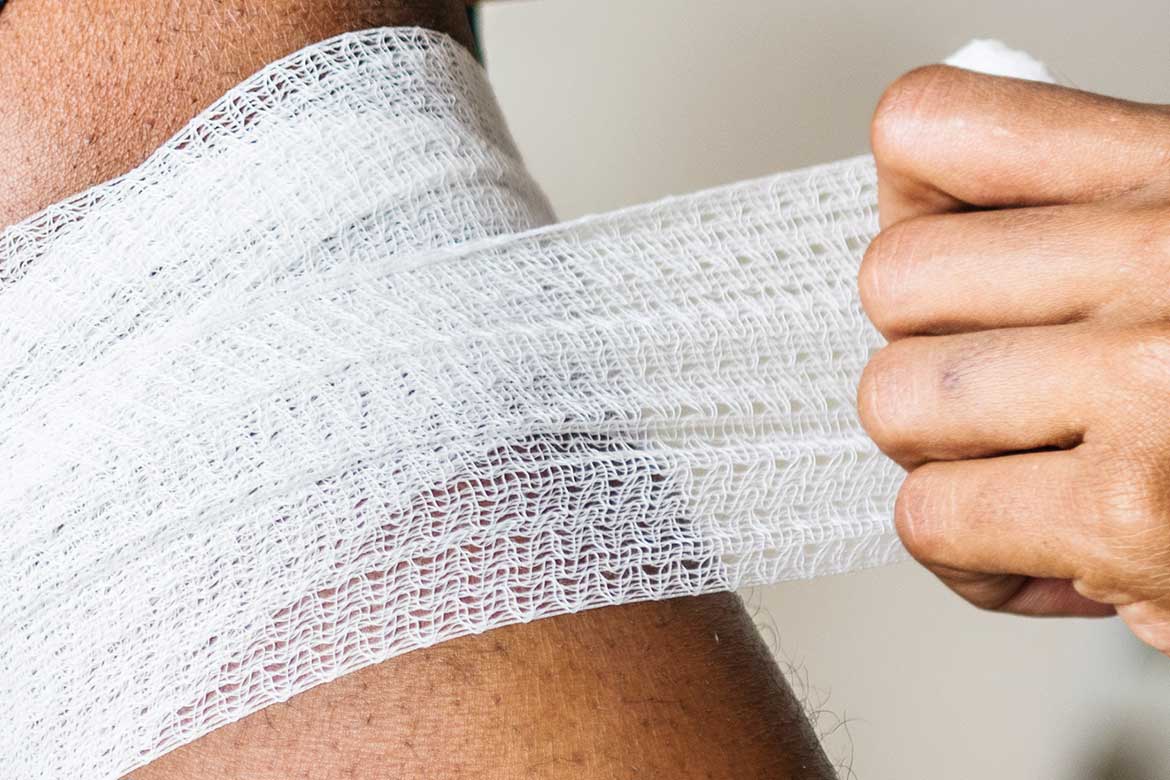10th December, 2024
A Guide To The Different Types Of First Aid Training Courses
There are a few different first-aid training courses available, so how do you know which type you need? Nominated first aiders are a must for any workplace, but with various types of first aid training available, it is vital to get the right level of training for your first aid cover.

First aiders are needed by most workplaces. If you need medical help, it can take time for the emergency services to arrive.
On average it takes over 7 minutes for an ambulance to arrive in life-threatening situations. But it only takes 4 minutes to die from a heart attack.
Being able to give CPR could keep someone alive until the paramedics arrive, increasing the chances of survival and recovery.
A heart attack isn't the only situation a first aider can help. A blocked airway can kill someone in 3-4 minutes. Loss of blood, choking, shock, and a variety of other medical emergencies can be fatal.
Knowing what to do in various medical situations is important for a first aider. From burns to diabetes, cuts to chemical contact. By providing the right treatment, the consequences of a medical emergency can be minimised. First aiders can quite literally mean the difference between life and death.
Nominated first aiders are a must for any workplace, but what kind of first aider do you need? With various types of first aid training available, it is vital to get the right level of training for your first aid cover.
Becoming a first aider involves learning to identify different medical emergencies, knowing how to treat them, and practising how to treat them. First aid training is practical and hands-on. First-aiders need the skills and confidence to deal with situations in the real world, and so first-aid training puts them through common situations to practice.

There are several different first-aid training courses available, so how do you know which type you need?
Well, the type of first aider you need, will depend on the type of work you do, how many people might need first aid, and the kinds of injuries that you might get.
Choosing the right first aid training course will give your first aiders the knowledge and competence to assist should a medical emergency occur.
The two main types of first aid training for the workplace are:
- Emergency First Aid at Work - a level 2 first aid qualification, usually provided over 1 day
- First Aid at Work - a level 3 first aid qualification, usually provided over 3 days
Both of the above courses are open to individuals looking to learn first aid skills, so which do you need?
Emergency First Aid at Work
- 1 day course
- Emergency First Aider
The one-day Emergency First Aid at Work course is most suited to those in small, low-hazard work environments. This course will give you the skills you need to deal with, as the name suggests, emergency first aid situations.
Completing the course will make you a qualified emergency first aider.
You will know what to do in a variety of emergency first aid situations like cuts, burns, broken bones, bleeding and shock. You'll learn CPR, the recovery position, and how to apply bandages.
This course does a pretty good job of covering the basics.
First Aid at Work
- 3 day course
- First Aider
The three-day First Aid at Work course is the qualification to gain for larger or higher hazard work environments. This course will give you more thorough first-aid knowledge and practical skills.
This course covers the emergency first aid at work module (the one-day course), but also how to deal with a variety of minor and major illnesses.
You'll learn about extra situations like fainting, spinal injuries, stroke, chest pains, heart attack and other medical problems that may arise at work.

What first aid course do I need?
The type of first aid training you will need depends on a variety of factors, not just the hazard level in your workplace.
The type (and number of first aiders) depends on:
- The number of people
- The hazards
- Different areas and environments
- Any special needs
The more people that are present in the workplace, the more likely a medical situation could arise.
For example, a small office with 5 workers might find emergency first aid at work training sufficient, because it is a low-hazard environment with only a few people.
However, a larger office with 50 workers should consider the level 3 first aid at work course for nominated first aiders. There are more people present, so it is more likely that a first-aid situation could occur. Either by something happening at work or due to a pre-existing health condition.
Higher-hazard work environments (such as factories or construction sites) carry more risk, and unfortunately, accidents are more likely to occur. In this type of workplace, your first aiders need to be able to handle more types of emergencies.

Unless the numbers on site are very low (less than 5) then the 3-day first aid at work course should be given to nominated first aiders to ensure that they have adequate skills to deal with the situations that may occur. Full first aiders are more likely to be required in this environment, instead of emergency first aiders (although you may choose a mix of both).
Find out more in our blog post how many first aiders do I need?
Some businesses have a variety of work environments, for example, offices for administrative staff, and a warehouse for distribution.
Different areas and work environments should be assessed for first aid needs separately. It may be that a mixture of Emergency First Aid at Work, and First Aid at Work training is needed.
And of course, other work environments might have more special needs. Such as a nursery, which might need to provide first aid to infants, so should focus on first aid for children. Or an outdoor activity centre that might be providing activities in remote areas, and needs extra first aid provision due to the length of time it would take for emergency services to arrive.
There are different types of first aid training available, such as paediatric and activity-specific, that can enhance your first aid skills in specific areas where required.
How long is a first aid course?
A first aid course is usually one (emergency first aid course) or three (first aid at work course) days long.
Usually, first aid courses are all classroom-based, however some blended versions may be split into online and in-person learning. For example, some first aid at work courses have a day of online learning, followed by two days of classroom-based learning at a training venue or workplace.

How long is first aid training valid for?
When you complete a first aid course, you will get a certificate confirming you are a qualified first aider for the type of first aid training you have completed. Your first aid training certificate is usually valid for three years from the date of your assessment.
How often do you need to do first aid training?
First aid training is usually carried out every three years, with refreshers needed to maintain your status as a qualified first aider.
As an online health and safety service, we don't provide qualified first aid training. Both the above courses are classroom-based courses with practical elements. There are a variety of providers UK-wide, including St John Ambulance and Red Cross, plus other local providers.
If you need to refresh your first aid knowledge or want to become an appointed person, check out our online health and safety courses.
This article was written by Emma at HASpod. Emma has over 10 years experience in health and safety and BSc (Hons) Construction Management. She is NEBOSH qualified and Tech IOSH.
Better health and safety...
We are here to help you and your business put safety in everything.
Learn MoreRecent posts like this...

Is Health And Safety Training A Legal Requirement?
For all business types, health and safety training will be a legal requirement in one form or another. Your team might need external training courses, qualifications, and certificates. Staff may need in-house inductions, on-the-job training, and toolbox talks. Often, a mixture of both is required.
Read Post
HSE Fee For Intervention Charges Explained
FFI stands for 'fee for intervention', which was introduced under the Health and Safety (Fees) Regulations 2012. FFI aims to recover the HSE's costs, including inspection, investigation and enforcement action, charging businesses that are in breach of health and safety regulations.
Read Post
How To Plan For Better Health And Safety At Work
If you want better health and safety, you need to plan for it. And who doesn't want to stay safer and have fewer accidents and ill health in their workplace? In this blog post, we look at how to plan for better health and safety at work.
Read Post